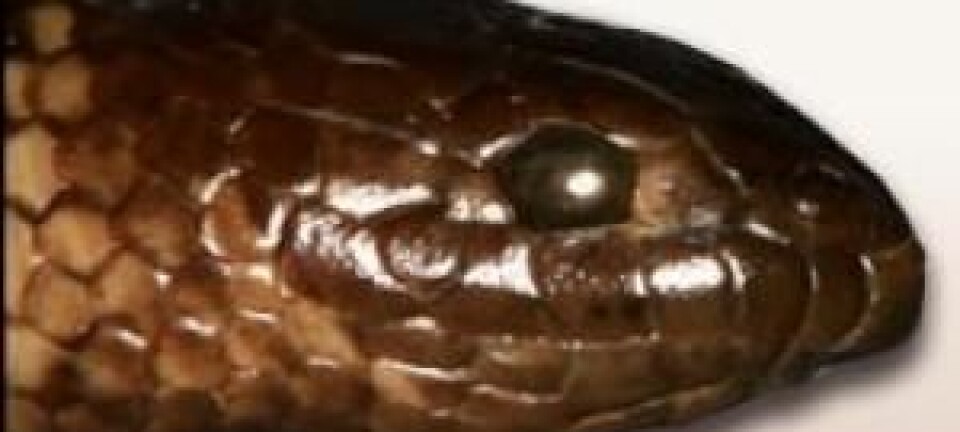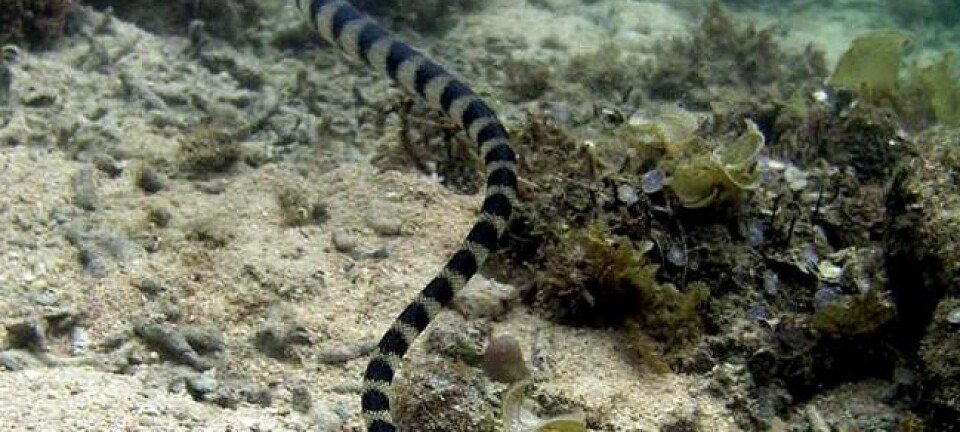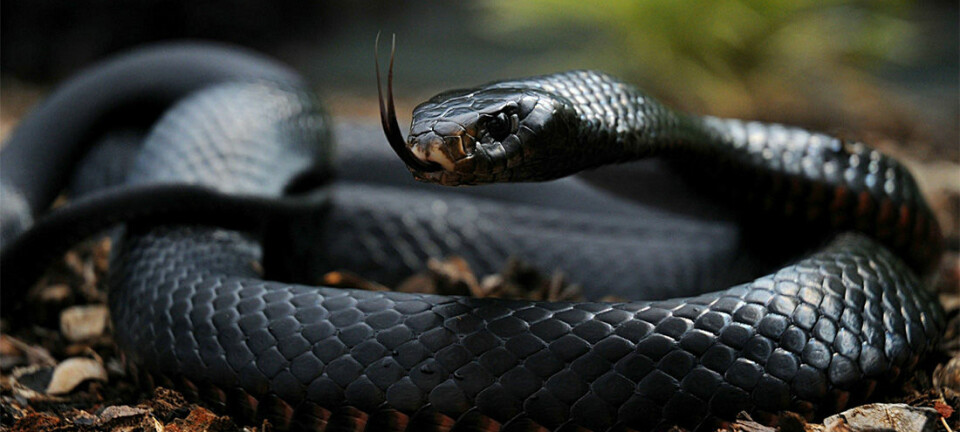
Rock singer has been injecting himself with snake venom for 25 years
Scientists have now made a catalogue of Steve Ludwin’s antibodies.
For 25 years, Steve Ludwin has self-administered weekly injections of venom from some of the world’s most venomous snakes.
He initially used extremely low doses, diluted with water. Since then, he gradually increased the dose and expanded his repertoire to more than 35 snake species.
He believes that the injections boost his immune system and keep him young. There is no scientific evidence that this is the case, just as there is no doubt that Steve has embarked on a potentially life-threatening hobby. But it does present scientists with a unique opportunity.
A research team from the University of Copenhagen has recently completed an artificial library of antibodies, comprised of copies of antibodies generated by Ludwin’s immune system in response to injections with snake venom.

The library is now used to screen for antibodies that can neutralise individual toxins in venom. Some of these could be used to develop antivenoms to treat snake bites.
“There’s a higher chance of mining effective antibodies from such a person than there would be from someone who had never been bitten. His immune system really is a goldmine,” says Simon Glerup from the Department of Biomedicine at Aarhus University, Denmark. He is not involved in the project.
Read More: Snake venoms’ deadly secret unlocked: study
Is it worth the risk?
There are of course a number of antivenoms already in existence for a range of snake bites. But snake bites are still a major problem in many developing countires. They kill around 150,000 people a year worldwide and leave 400,000 requiring amputation. Existing antivenom medicines were just recently added to WHO’s list of essential medicines.
To develop antivenom, the snake is milked for its venom, which is then injected into animals, usually horses. They produce antibodies to work against the toxins in the snake venom.
The antibodies mature inside the horse and are then extracted and purified before they can be injected into people. This process saves lives, but unfortunately it is not always doable and some people can suffer unwanted side effects from antibodies developed in animals, such as serum sickness—similar to an allergic reaction.
“You could develop allergies afterwards and there are some examples of people dying from anaphylactic shock. So then the question is: do you want to run this risk or just die with certainty,” says Brian Lohse, an associate professor in chemistry and molecular biology at the University of Copenhagen, Denmark and leader of the research project, the Anti-venom Venture.
Read More: Snakebites still exact a high toll in Africa. A shortage of antivenoms is to blame
“A unique tailor-made library” of antibodies
One way around this is to produce synthetic antivenoms, which a number of research groups around the world are currently trying to do.
In Lohse’s lab at the University of Copenhagen, they are experimenting with adding DNA into biological systems, such as virus particles. This forces the particles to produce antibodies. They then isolate the antibodies, which bind to specific toxins in the venom from which they can generate synthetic antivenoms.
This removes the need for horses and produces a safer, more more effective, and clean product.
Lohse’s group has now used Ludwin’s DNA as part of this on-going research.
“Before we used random peptide- and antibody libraries, but by working with Steve we got access to a unique opportunity, because through him (or his DNA/RNA) we have the possibility to obtain human antibodies specifically targeting the snake toxins that Steve has used, and displaying them directly onto the surface of the virus particles. We simply copy his antibody portfolio over and into the phage display library,” says Lohse.
Now they need to isolate the most relevant antibodies from all of the samples in the library.
“With Steve’s help we now have a unique, tailor-made library, that potentially contains neutralising human antibodies against snake toxins, which could eventually be used to treat snakebite victims” says Lohse.
Read More: How biotechnology could offer hope for snakebite victims
Two years to develop the library
Lohse and his research group first came across Ludwin’s activities via a YouTube video produced by VICE, detailing how and why he injected the snake venom each week. It was a unique opportunity to access human DNA, which would not otherwise have been approved by a scientific ethics committee.
After making contact, they flew Ludwin to Copenhagen and took blood samples. But these samples did not contain enough B-cells, which make the antibodies. Physician Pal Szesci from University Hospital Copenhagen and the Anti-Venom Venture project, proposed another strategy, extracting Steve’s bone marrow.
After a number of unsuccessful attempts to isolate B-cells from his blood samples, Ludwin agreed to having his bone marrow extracted for analysis—a painful procedure.
“Steve had to think about it for a couple of days, but Steve’s a tough nail, and said yes. That was what it took to finally get over the hurdle. We were finally able to extract enough of the B-cells and isolate his DNA and RNA,” says Lohse.
All in all it took two years to complete The Ludwin Library.
Read More: Danish biologist catches sea snakes with his bare hands
First task is to neutralise deadly toxins
The scientists have now secured some initial funding to start screening the library for binding antibodies, which can be used in the fight against snake venom.
The first step is to search for the specific antibodies, which fought off the most venomous toxin proteins that Ludwin injected into his body, says Lohse.
“Our approach is to go for and block the toxins that are lethal within a very short period. For example, neurotoxins that paralyses you and prevents you from breathing, which leads to death. There are also other nasty side effects such as breaking down muscle tissues, cells, and bloodcells, which we look at as well. but the top priority is to prevent people from dying immediately [after the bite]—the follow-up treatments for the many side effects will follow, in the aftermath,” he says.
They have already copied the parts of Ludwin’s DNA that code for his antibodies inside the viruses that combine with a given toxin. This gives them a recipe for the effective antibodies, which can then be reproduced synthetically.
In the future they hope to develop the antibodies inside animal cells, which would allow Lohse and colleagues to develop the specific, neutralising antibodies into an antidote—a pharmaceutical that can be used for treatment in a process that can be done on an industrial scale.
But as valuable a resource as Ludwin’s antibodies are, Lohse does not want to give the impression of supporting Ludwin’s self-immunisation project or to encourage others to follow Ludwin’s life threatening example.
“The fact that he does this and has survived so long is almost a miracle. You might not only get liver and bone damage, you could die. The University of Copenhagen absolutely does not encourage anyone to do what Steve has done. It is important for us to point out that Steve started this long before we came into the picture, and hence we could not have encouraged Steve to do what he does,” he says.
---------------
Read More in the Danish version of this article on Videnskab.dk
Translated by: Catherine Jex
Scientific links
- "From Fangs to Pharmacology: The Future of Snakebite Envenoming Therapy", Curr. Pharm. Des. (2017), DOI: 10.2174/13816128226661606230 7343
- Anti-Venom Venture Project









